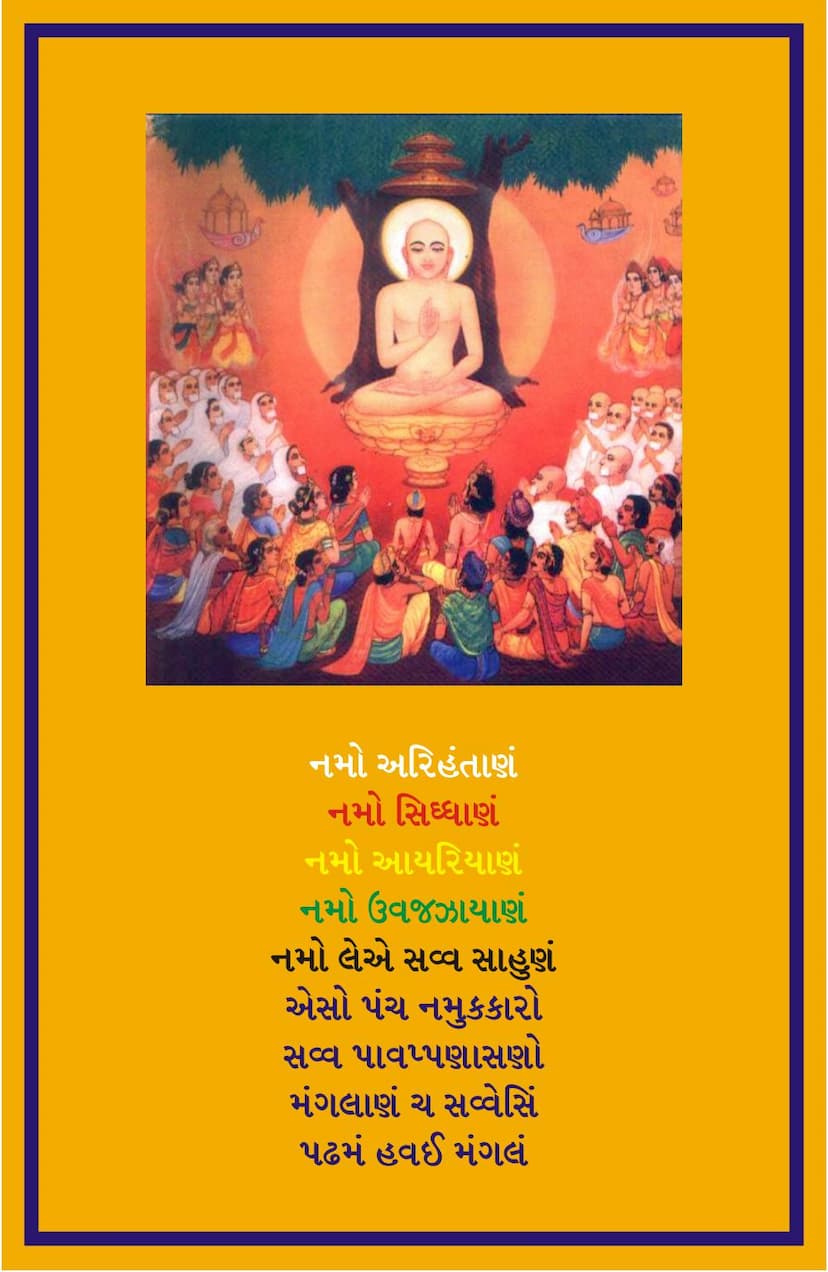Kalpasutra Part 02 Sthanakvasi Gujarati
Added to library: September 2, 2025
Loading image...

Summary
This summary outlines the content of the Kalpasutra, Part 02, Gujarati Edition, authored by Ghasilal Maharaj and published by A.B. Shwetambar Sthanakwasi Jain Shastroddhar Samiti. The text, a commentary on the Kalpasutra, details significant events and teachings in the life of Lord Mahavir Swami.
Key Themes and Events Covered:
- Introduction and Publisher Information: The text begins with traditional Jain invocations and provides publication details, including the author, publisher, and edition information (first edition, 1959).
- Rules for Swadhyaya (Study): Detailed instructions are given regarding the appropriate times for studying the core text, including specific periods during the day and night, and times to avoid (e.g., during menstruation, certain astronomical events, or periods of impurity). These rules are primarily for the original text, not necessarily for translations.
- Narrative of Lord Mahavir's Life: The core of the text recounts key events from Lord Mahavir's life, including:
- Birth and Celestial Events: Descriptions of the divine manifestations and auspicious signs that occurred at Lord Mahavir's birth, such as universal light, celestial drums, cessation of suffering for beings in hell, and rains of auspicious substances.
- Deva Activities: The text details the involvement of various celestial beings (Devas) in celebrating Lord Mahavir's birth, including Indra's procession and the arrival of numerous celestial maidens (Disha Kumaris) to honor the event.
- Lord Mahavir's Childhood and Education: Narratives of Lord Mahavir's early life, his divine powers, and his interactions with celestial beings and ordinary people, including his interactions with a skilled teacher where his inherent knowledge becomes evident.
- Overcoming Obstacles (Upasargas): Accounts of Lord Mahavir facing and overcoming various challenges and afflictions caused by deities (like the Yaksha Shulapani and the Naga Chandrakoushika), wild animals, and even human interference, all while maintaining equanimity and spiritual resolve.
- Tapasya (Asceticism): Descriptions of Lord Mahavir's rigorous ascetic practices, including various types of fasts (like Ayambila, and month-long fasts), and his adherence to vows and principles.
- The Four Great Festivals and Fourteen Auspicious Signs: While not explicitly detailed as separate sections in this excerpt, the narrative implies the significance of these events.
- Lord Mahavir's Teachings and Dissipation of Doubts: The text highlights how Lord Mahavir resolved the doubts of learned Brahmins like Indrabhuti, Agnibhuti, Vayubhuti, Vyakt, Sudharma, Mandik, Mauryaputra, Akampit, Achalabhraata, Metarya, and Prabhas, leading to their conversion and discipleship.
- The Fourfold Community (Chaturvidh Sangha): The establishment of the monastic order (monks and nuns) and the lay followers (male and female disciples) is mentioned.
- The Significance of Tri-padi: The foundational principles of utpad (creation), vyay (destruction), and dhrauvya (permanence) are explained, forming the basis of the Twelve Angas (Dwadashangi).
- Lord Mahavir's Nirvana: The text concludes with Lord Mahavir's liberation (Moksha), his passing away, and the subsequent events, including Gautam Swami's grief and eventual attainment of Keval Gyan (omniscience).
- Succession of Teachers: The text briefly touches upon the succession of spiritual leaders after Lord Mahavir, mentioning Sudharma Swami and Jamboo Swami.
Key Concepts Highlighted:
- Ahimsa (Non-violence): Implicit in Lord Mahavir's equanimity and his teachings.
- Equanimity (Samabhava): Lord Mahavir's ability to remain unaffected by pleasure or pain, praise or criticism, external events, or the actions of others.
- Detachment (Nirlepa, Virakta): His transcendence over worldly attachments, physical comforts, and even divine allurements.
- Karmic Principles: The text illustrates how actions (karma) lead to consequences, and how Lord Mahavir's life exemplifies the overcoming of karmic bonds through austerity and self-discipline.
- Knowledge and Wisdom: Lord Mahavir's inherent omniscience and his ability to resolve complex philosophical doubts are central themes.
- Devotional Aspects: The significant role of celestial beings and the reverence shown to Lord Mahavir are emphasized.
- The Importance of Vinaya (Humility and Respect): The rules for study highlight the importance of humility in approaching sacred texts.
This summary reflects the rich narrative and profound philosophical underpinnings of the Kalpasutra, as presented in this Gujarati edition, offering a glimpse into the life and teachings of Lord Mahavir from a Sthanakwasi Jain perspective.